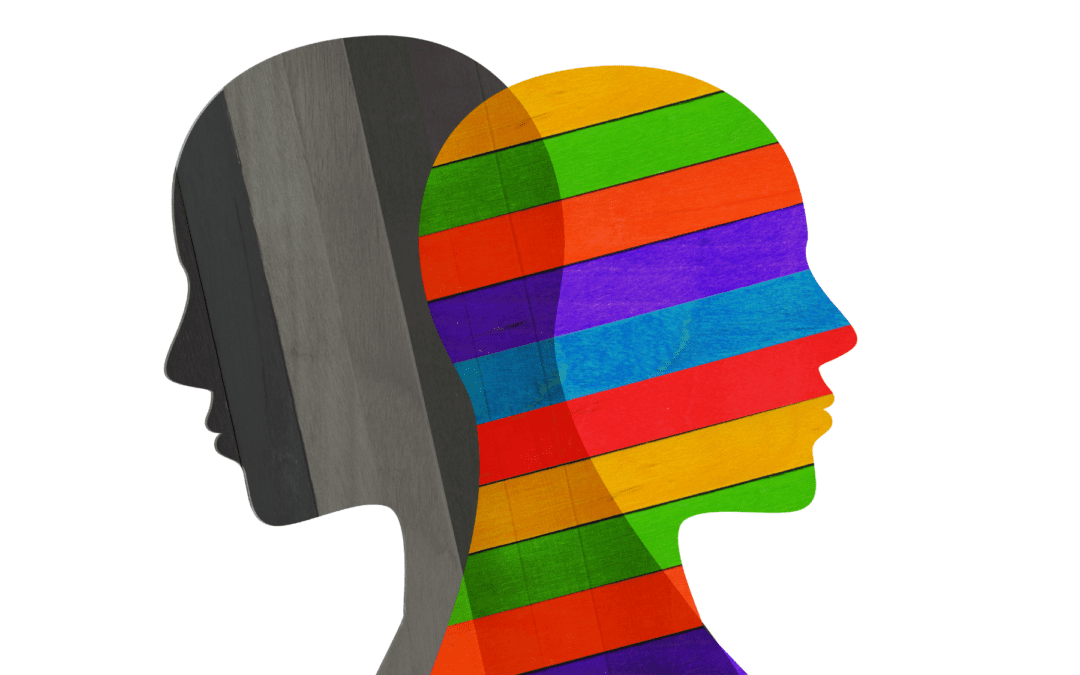Author: Anna Gaissert
Bipolar I disorder (BP-I) and bipolar II disorder (BP-II) are two of the three major forms of bipolar disorder.[1] While both involve shifts in mood, energy, activity levels and concentration, BP-I and BP-II have two key differences.[2] These differences include the intensity of manic episodes and the prevalence of major depressive episodes.[3]
- Intensity of manic episodes
One major difference between BP-I and BP-II is the intensity of manic episodes. BP-I involves periods of severe mania whereas BP-II involves periods of less severe hypomania.[4]
Mania and hypomania are both marked by persisting elevated, expansive or irritable mood that is uncharacteristic of the person at baseline. These periods may also involve abnormally elevated self-esteem, decreased need for sleep, increased talkativeness, flight of ideas or racing thoughts, abnormal distractibility, increased energy or goal-directed activity and abnormally risky behaviors.[5]
Mania lasts for at least one week and is considered a medical emergency, often requiring psychiatric hospitalization.[6] Its effects on one’s personal life and ability to work are debilitating.[7] Hypomania lasts for at least four days.[8] It does not cause impairment in functioning, require hospitalization, or have psychotic features.[9]
- Prevalence of major depressive episodes
Another notable difference between BP-I and BP-II is the prevalence of major depressive episodes. A BP-II diagnosis requires a patient to experience at least one major depressive episode. While those with BP-I may also experience major depressive episodes, a major depressive episode is not a diagnostic requirement.
Major depressive episodes involve persisting depressed mood or anhedonia (the inability to feel pleasure) for at least two weeks. These periods may also involve an increase or decrease in appetite or body weight, persisting insomnia or hypersomnia, persisting fatigue or energy loss, psychomotor agitation (fidgeting or restlessness) or slowing, feelings of worthlessness or excessive guilt, problems concentrating or making decisions and recurring thoughts of death or suicide.[10]
| Diagnostic Criteria[1] | |
| Bipolar I disorder | Bipolar II disorder |
| Essential diagnostic features:
a. At least one lifetime manic episode b. The manic episode was not due to the effects of medications, substances, or medical illness
Diagnostic note: an episode of depression is not required to make a diagnosis |
Essential diagnostic features:
a. At least one lifetime hypomanic episode b. At least one lifetime major depressive episode c. Neither the hypomanic nor the depressive episode(s) was due to effects of medications, substances, or medical illness
|
References
[1] National Institute of Mental Health. (2020, Jan.). Bipolar Disorder. https://www.nimh.nih.gov/health/topics/bipolar-disorder/index.shtml
[1] Ibid.
[1] Lu, S. (2020, Aug. 28). The difference between bipolar 1 and 2, and how to recognize the symptoms. Insider. https://www.insider.com/bipolar-1-vs-2
[1] Bobo, W.V. (2017 Oct.). The Diagnosis and Management of Bipolar I and II Disorders: Clinical Practice Update. Mayo Clinic Proceedings, 92(10),1532-1551. https://www.mayoclinicproceedings.org/article/S0025-6196(17)30544-X/pdf
[1] Ibid.
[1] Ibid.
[1] Lu.
[1] Bobo.
[1] Wise, E., & Swartz K.L. Bipolar II Disorder. Johns Hopkins Psychiatry Guide. https://www.hopkinsguides.com/hopkins/view/Johns_Hopkins_Psychiatry_Guide/787046/all/Bipolar%20II%20Disorder
[1] Bobo.

